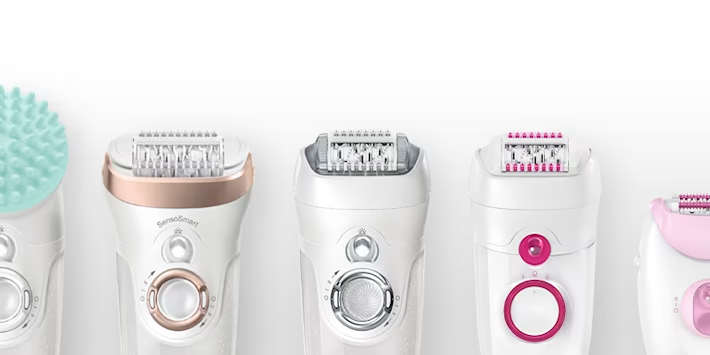Exfoliation is the holy grail of skincare. Want smoother skin? Exfoliate. Brighter skin? Exfoliate. Clearer skin? You guessed it – exfoliate. But do you know how to exfoliate your face?
There are many different ways to exfoliate, including physical and chemical exfoliators. You can use special scrubs, brushes or washcloths, not to mention face peels and anti-ageing serums.
If the world of exfoliation is a little confusing, we’ve got you. Here, we’ll answer all your questions about exfoliating, including:
How to exfoliate your face
How often to exfoliate your face
Best way to exfoliate your face
What is exfoliation?
Quite simply, exfoliation is the process of removing dead skin cells. Buffing away dead skin cells reveals fresh and youthful-looking skin underneath to give your skin a glow. Exfoliation also stimulates natural skin regeneration, which can slow as we age.
Different types of exfoliants
So, how do you exfoliate your face? There are two main types of exfoliants: physical and chemical.
Physical exfoliants physically remove the layer of dead skin cells with friction, like scrubs, brushes, washcloths and dermaplaning.
Chemical exfoliants weaken the bonds between dead skin cells to boost cell turnover. Examples include face peels, toners and masks that contain acids or enzymes to break down the dead skin cell bonds.
The best way to exfoliate your face depends on your skin type.
How to exfoliate your face: Step by step guide
Step 1: Cleanse your face
Before you start exfoliating, make sure your skin is clean. Wash your face using a gentle cleanser and warm water to remove any makeup or dirt. If you’re using a chemical exfoliator, pat your skin dry with a clean towel. If you’re using a physical exfoliator, leave your face damp.
Step 2: Apply gently
With exfoliating scrubs, take a pea-sized amount and spread it evenly across your face. Massage the scrub across your skin in circular motions – and be gentle. Over-exfoliating can leave your skin red and raw.
The same applies to other physical exfoliators, like brushes and clothes. Not sure how to exfoliate the face naturally? These types of physical exfoliants are natural ways to remove dead skin without chemicals or cleansers. Use the exfoliator in gentle rotations and be careful around the delicate eye area. The Braun FaceSpa Pro is a physical exfoliator that epilates, cleanses and tones all in one. You can use the brush in combination with your favourite cleanser or scrub, too.
If you’re using a chemical exfoliator, follow the instructions for the product. With serums, typically, a pea-sized amount is applied across your face and left overnight. With masks and peels, the product is left on your face for a specified length of time (a few minutes usually) and then removed.
Step 3: Rinse skin
After scrubbing your skin for around 30 seconds, you can rinse exfoliating scrubs off. Use lukewarm water so you don’t irritate the fresh skin with hot water. You should rinse your face after using other physical exfoliants to wash away the removed dead skin cells.
If you’re using a chemical mask or peel, wash your face clean after the specified time. Make sure you remove all the product, or it can irritate your skin.
With overnight products like serums, just cleanse your face in the morning as normal.
Step 4: Moisturise
Don’t forget to moisturise! After rinsing your skin clean, pat it dry and apply a gentle moisturiser. Exfoliation can leave your skin dry, so it’s essential to rehydrate and lock in moisture afterwards.
Benefits of exfoliation
Get glowing skin – Gently and effectively buff away dead skin cells from precious facial areas to reveal youthful skin. The Braun FaceSpa exfoliation device offers a set of different heads to accommodate all needs: exfoliation brush, extra sensitive exfoliation brush, normal brush, beauty sponge and the new skin vitalising pad.
Remove impurities – Gently restore your natural glow and remove make-up, dead skin and impurities with the broad range of exfoliation devices from Braun. The exfoliating brush is very effective in removing dry and dead skin. A perfect combination of gentle and rounded bristles makes cleansing gel application even more effective.
Prevent acne – Exfoliating can help prevent acne from forming by removing pore-clogging dirt, oil and dead skin cells.
Smoother skin – Exfoliants can smooth skin texture and remove rough skin, acne scars, dark spots and hyperpigmentation for a more even skin tone and texture.
How to exfoliate face for different skin types
Exfoliating Normal skin
If you have normal skin, you can choose between normal and chemical exfoliators. The best way to exfoliate the face includes retinoid serum used nightly or an exfoliating brush twice a week.
Exfoliating Oily skin
Those with oily and blemish-prone skin should opt for a chemical exfoliant. Look for one that contains BHAs to unclog pores and reduce breakouts. Some physical exfoliants can irritate pimples, so steer clear of scrubs. How often should you exfoliate your face? Two to three times a week is good for oily skin, but check the directions for your product for recommended usage.
Exfoliating Dry skin
The best way to exfoliate a face with dry skin is a physical exfoliant, like a scrub or brush. This removes dead skin without causing inflammation. How often should you exfoliate your face? Once or twice a week.
Exfoliating Sensitive skin
People with sensitive skin may find exfoliating too irritating. If you want to exfoliate, the best face exfoliator for sensitive skin is a gentle cleanser with a low-percentage acid. Use it no more than once a week.
The best way to exfoliate your face
So, there are many ways to exfoliate – and plenty of benefits for your skin. The best way to exfoliate your face entirely depends on your skin type and skin concerns.
Don’t be afraid to try a few different exfoliation methods to see what works for you. If you’d like to go further, try our guide on how to exfoliate your body.


